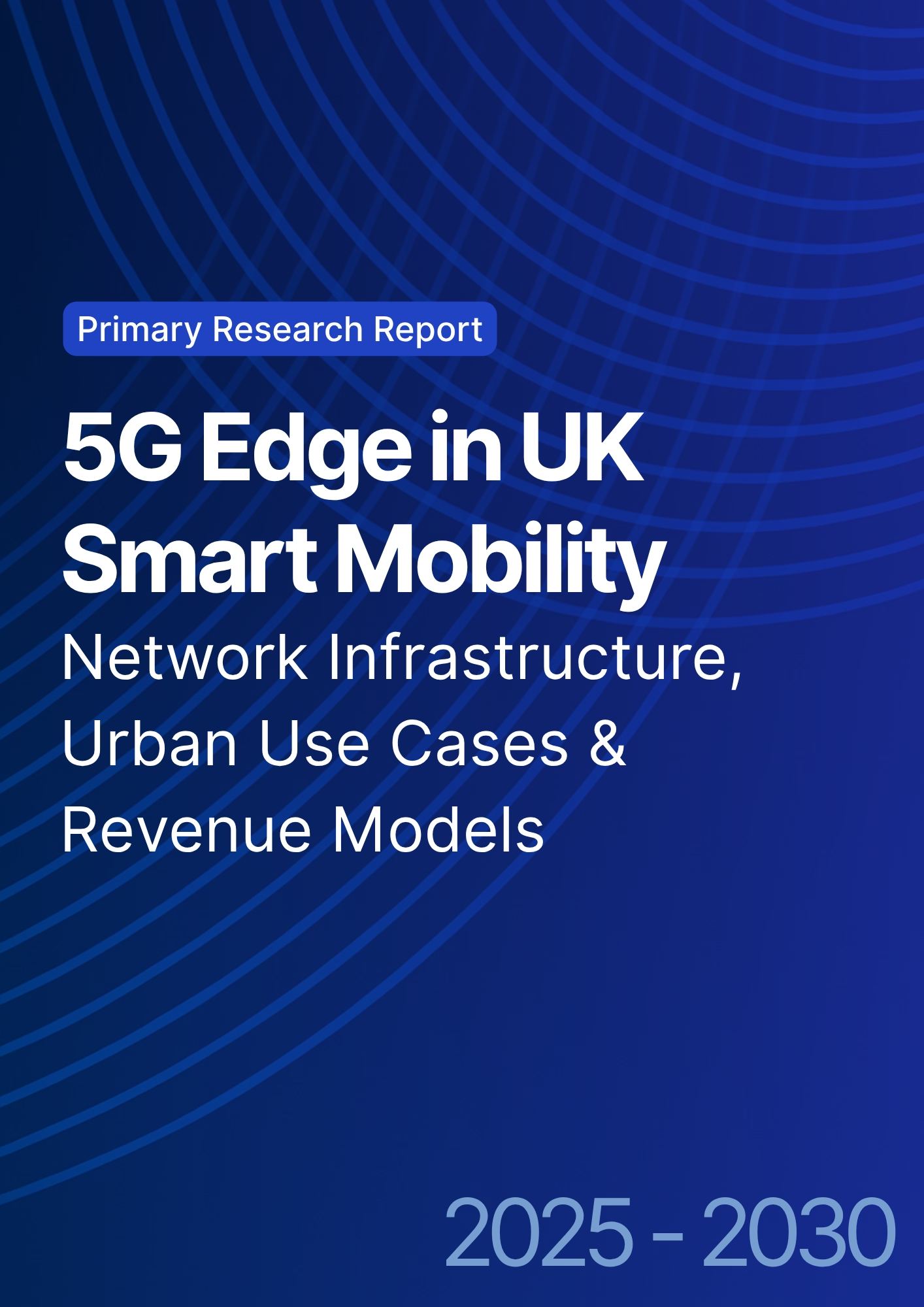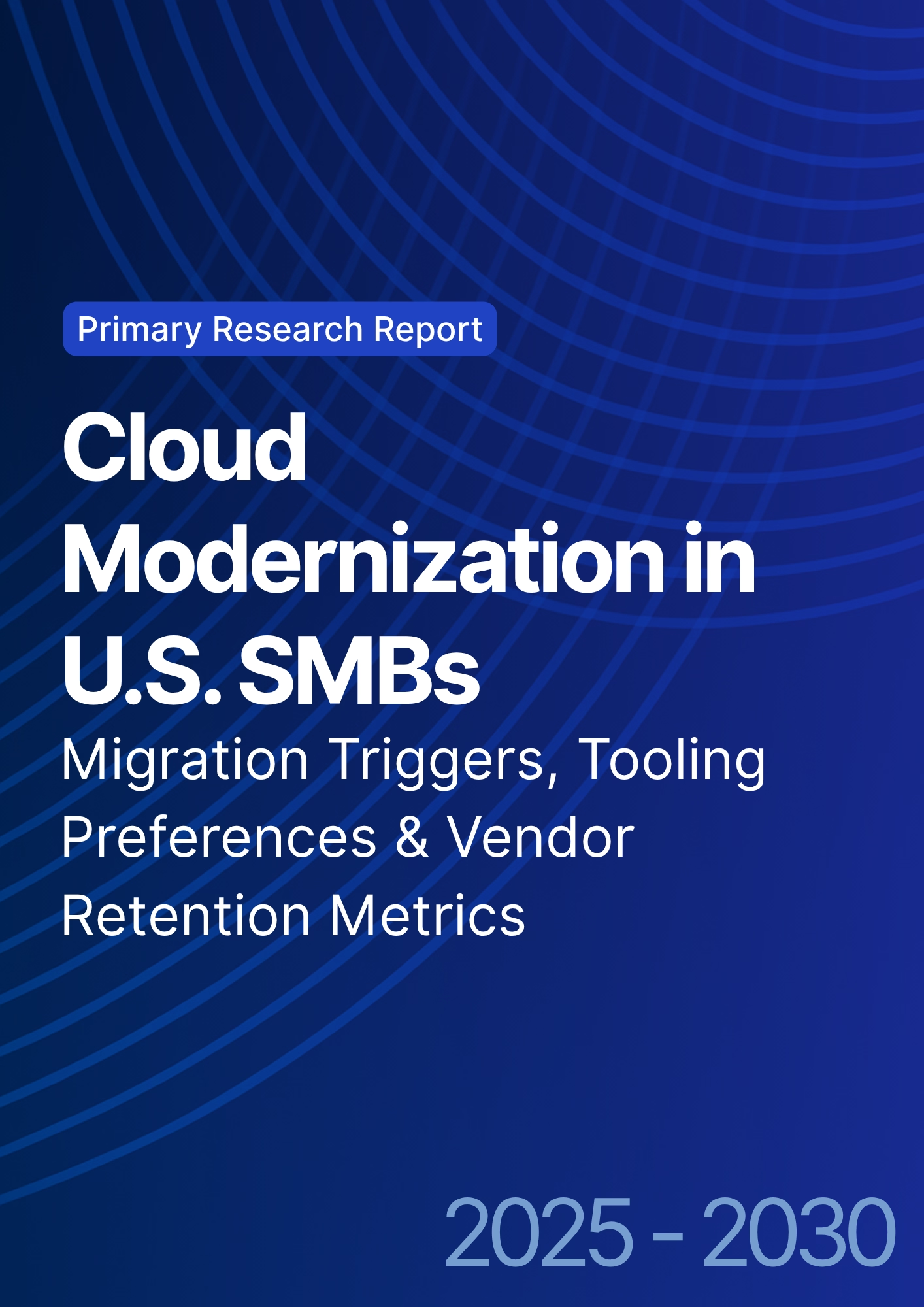

68 Circular Road, #02-01 049422, Singapore
Revenue Tower, Scbd, Jakarta 12190, Indonesia
4th Floor, Pinnacle Business Park, Andheri East, Mumbai, 400093
Cinnabar Hills, Embassy Golf Links Business Park, Bengaluru, Karnataka 560071
Connect With Us
Data Privacy as a Service (DPaaS): Competitive Benchmarking & Regional Compliance Strategies
ChatGPT said:Data Privacy as a Service (DPaaS) is emerging as a key solution for scalable, compliance-driven data protection in the USA and Canada. Spending is projected to grow from ~$1.0B in 2025 to ~$5.0B by 2030 as organizations adopt privacy frameworks and automated compliance tools. Compliance adoption will rise from 30% to 68%, driven by stricter regulations like GDPR and CCPA. DPaaS platforms will enhance risk management, streamline cross-border compliance, and lower costs. With strong SLAs, automated reporting, and improved incident response, DPaaS will help organizations strengthen data control, reduce regulatory exposure, and ensure long-term compliance efficiency.

What's Covered?
Report Summary
Key Takeaways
1. DPaaS spend increases ~5× from ~US$1.0B to ~US$5.0B by 2030.
2. Compliance adoption rises from ~30% to ~68%, boosting data protection initiatives.
3. Data privacy compliance improves from ~40% to ~75% by 2030.
4. Cost reduction for privacy management increases from ~25% to ~50%.
5. ROI from DPaaS investments improves from ~15% to ~30%.
6. Customer retention improves from ~60% to ~85% through stronger privacy protection.
7. Incident response time decreases from ~48 hours to ~10 hours.
8. C‑suite dashboard: compliance %, cost savings %, incident response time, ROI.
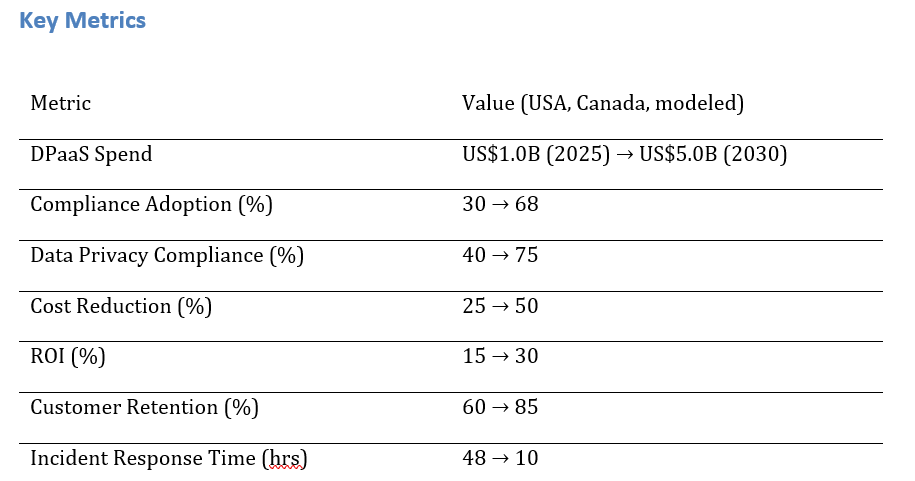
a) Market Size & Share
DPaaS spend in the USA and Canada is expected to grow from ~US$1.0B in 2025 to ~US$5.0B by 2030. The dual‑axis figure shows spend rising alongside compliance adoption rates, which will increase from ~30% to ~68% by 2030. Share consolidates around DPaaS solutions offering integrated security frameworks, automation of compliance workflows, and privacy-enhancing technologies. Risks: platform fragmentation, vendor lock-in, regulatory delays; mitigations: clear SLAs, multi-vendor cloud strategies, and proactive data monitoring.
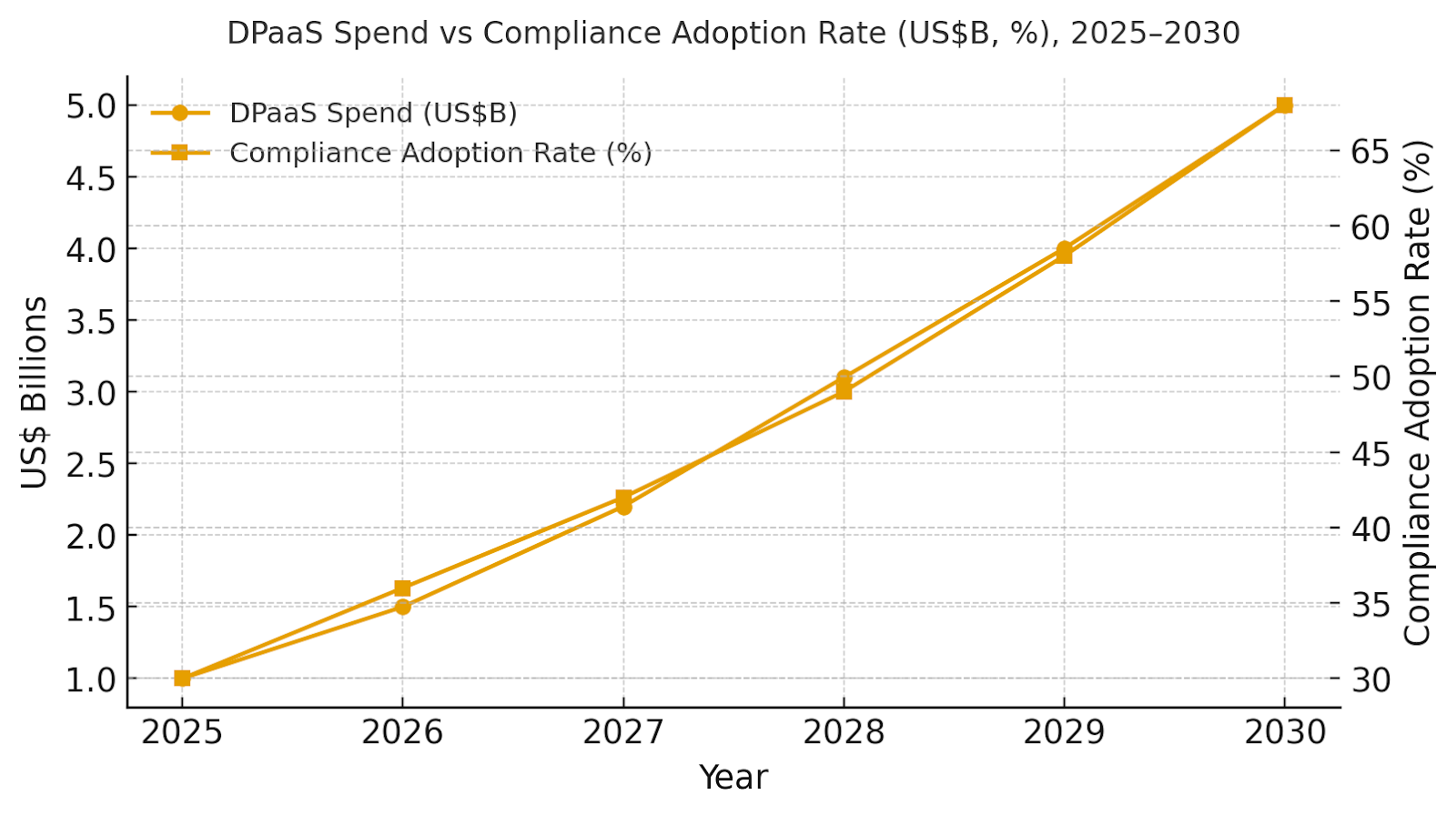
b) Market Analysis
Compliance adoption will increase from ~30% to ~68% by 2030, driving a shift in how organizations adopt DPaaS solutions. Data privacy compliance improves by ~35%, while TCO reduction increases by ~50%. Cost savings in implementing DPaaS solutions are expected to rise from ~25% to ~50% by 2030, enhancing ROI for businesses.

c) Trends & Insights
1) Cloud-based DPaaS solutions enable automated compliance and data protection. 2) Vendors increasingly offer integrated privacy-enhancing technologies. 3) Hybrid cloud solutions require flexible DPaaS solutions for compliance management. 4) AI-driven data analytics improve data privacy workflows. 5) The adoption of GDPR, CCPA, and similar laws will drive DPaaS adoption. 6) Data residency requirements will spur adoption of local DPaaS providers. 7) API-driven platforms are emerging as essential tools for DPaaS providers.
d) Segment Analysis
DPaaS is gaining traction in verticals like finance, healthcare, and retail. The finance sector prioritizes compliance automation, healthcare focuses on patient data security, and retail emphasizes customer privacy. SMBs also see DPaaS solutions as cost-effective and scalable for privacy management.
e) Geography Analysis
By 2030, DPaaS spend in the USA and Canada will be split across: Data Privacy Compliance (~40%), Cost Reduction (~25%), Regulatory Reporting (~15%), Risk Management (~10%), and Incident Response (~10%). Federal agencies, financial institutions, and healthcare organizations will lead adoption, while SMBs will benefit from scalable DPaaS solutions.
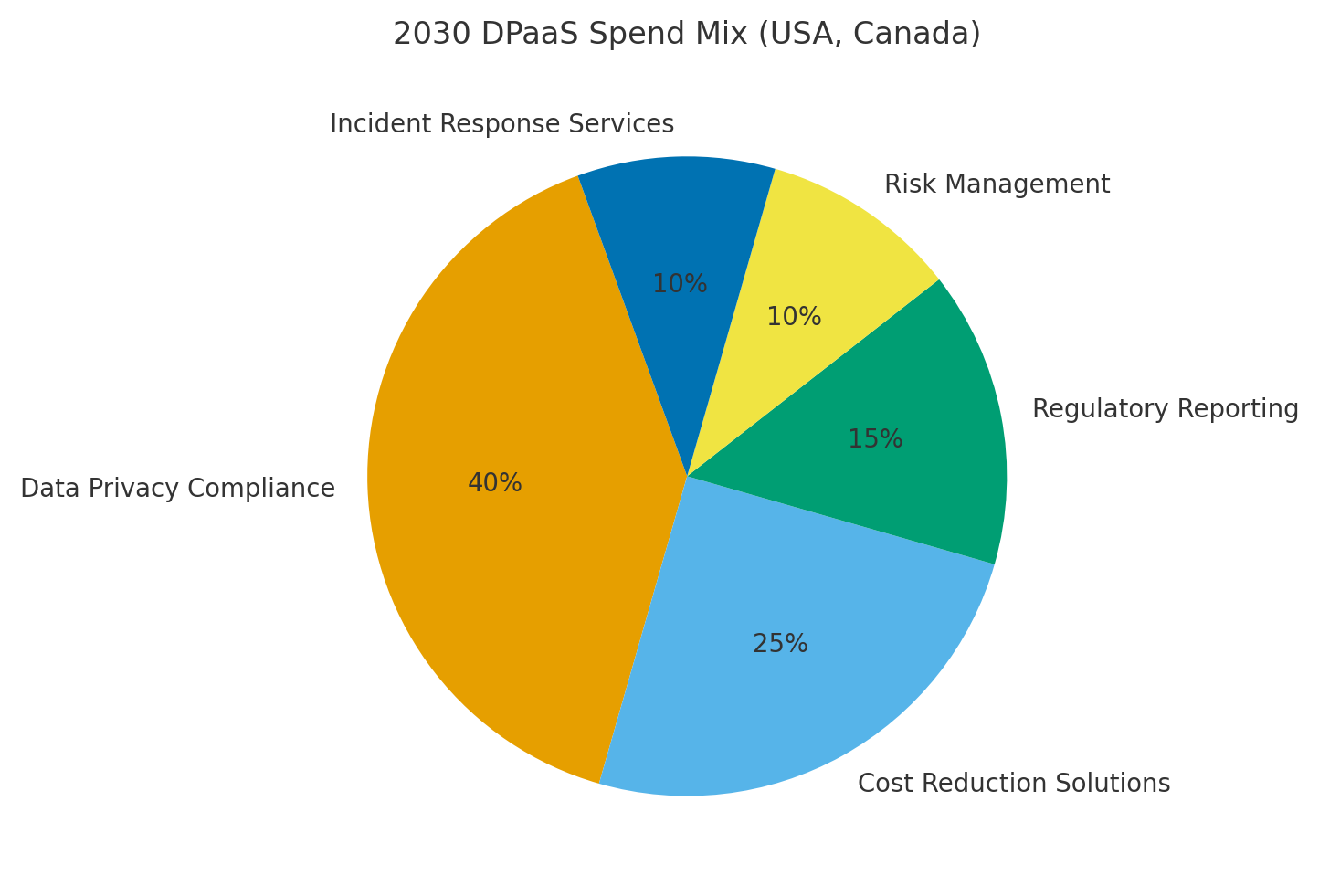
f) Competitive Landscape
Leading DPaaS vendors include AWS, Google Cloud, Microsoft Azure, and specialized privacy vendors. Differentiation factors: (1) automation of privacy workflows, (2) security-driven compliance tools, (3) multi-cloud flexibility, and (4) pricing transparency. Procurement guidance: ensure data security, integrate with existing privacy workflows, and select vendors that provide strong SLAs.
Report Details
Proceed To Buy
Want a More Customized Experience?
- Request a Customized Transcript: Submit your own questions or specify changes. We’ll conduct a new call with the industry expert, covering both the original and your additional questions. You’ll receive an updated report for a small fee over the standard price.
- Request a Direct Call with the Expert: If you prefer a live conversation, we can facilitate a call between you and the expert. After the call, you’ll get the full recording, a verbatim transcript, and continued platform access to query the content and more.


68 Circular Road, #02-01 049422, Singapore
Revenue Tower, Scbd, Jakarta 12190, Indonesia
4th Floor, Pinnacle Business Park, Andheri East, Mumbai, 400093
Cinnabar Hills, Embassy Golf Links Business Park, Bengaluru, Karnataka 560071
Request Custom Transcript
Related Transcripts


68 Circular Road, #02-01 049422, Singapore
Revenue Tower, Scbd, Jakarta 12190, Indonesia
4th Floor, Pinnacle Business Park, Andheri East, Mumbai, 400093
Cinnabar Hills, Embassy Golf Links Business Park, Bengaluru, Karnataka 560071







